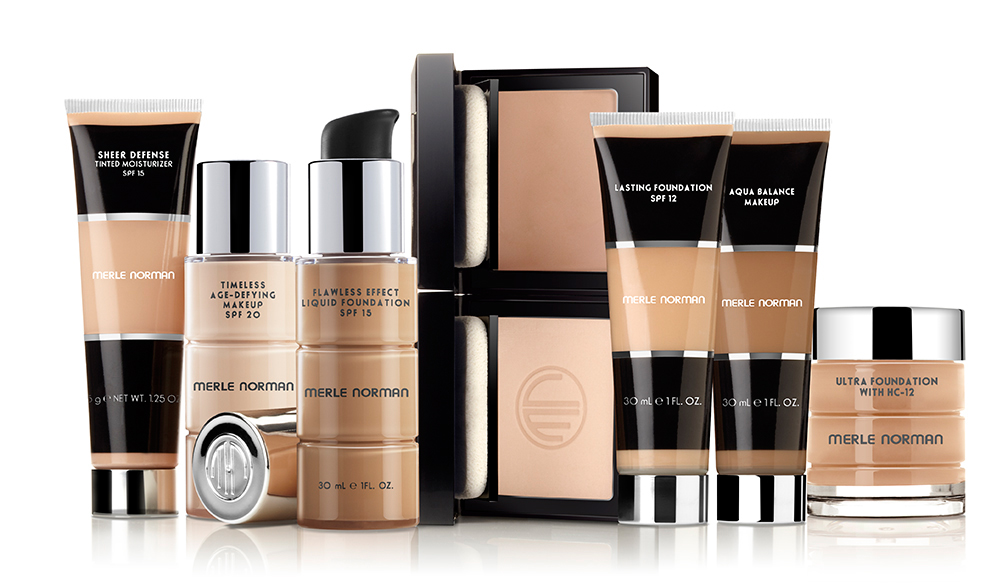
Carley: I guess I’ll start. I’m just going to ask for you to just state your name and position and any other background information that you’d like to provide first.
Leanne: Okay. My name is Leanne Tarantelli and I am a licensed managing esthetician and I am a manager at Merle Norman Cosmetics Polaris.
Carley: [explains major and project — asks for thoughts]
Leanne: Okay. So I would say what comes to mind right away is, and we do get this question occasionally, like our compacts or eye shadows, blush, powders things like that, a lot of times people will ask us if we had a replacement. So if they could have the plastic component and then have like a shade tray that fits in so it’s just the one little piece that gets thrown away after the makeups done and Merle Norman doesn’t currently have anything like that. So our company has been around since 1931, and we are still based in Los Angeles, which is where they’ve always been, and for a long time they’ve manufactured all their own componentry. So all their bottles, and compacts, and all of that they made themselves. Now as time has gone on, I think just from a financial standpoint, I don’t think it’s as cost-effective for them to manufacture their own, but they work very closely with a small group of vendors. And so they have streamlined our packaging so that most things are in the same… like if it’s a moisturizer, it’s on the same kind of jar, or if it’s a cleanser it’s all in the same kind of tube. But currently none of our things are refillable.
Carley: Okay.
Leanne: So when your product is done, you throw the entire thing away including the package.
…
Carley: So, besides like the refillable packaging questions that you get, do people ever ask like if what you have is recyclable or how to recycle it properly?
Leanne: They don’t usually ask that. I would say the great majority of our stuff is plastic.
Carley: Yeah.
Leanne: So if people are in the habit of recycling plastic things they would put our items along with their other regular plastic recyclables. When you first approached me, my thinking was, “Oh my God, we throw everything away,” you know? Like, if I do a makeup lesson, or use a tester, we throw those things away. And there was a time, when I first started doing this, that we washed everything. So like all the mascara wands, at the end of it they went into like a sanitizer that dissolved the mascara out of it, and then we had to scrub them on a bar of soap and then they got rinsed and then they went through another sanitizer and then they were laid out to dry. So we reused those, but it was super time-consuming and I can’t guarantee that they always got like as clean as I would… You know, I want a new wand that no one’s ever used before. Now our brushes are different because those can be cleaned and sanitized and they’re meant to hold up to that. But like a lip applicator is meant to be a one-time use thing. We use a lot of tissues. We use a lot of, like, our cleansing wipes. You know, if somebody comes in and they want to take their makeup off, of course that is not yeah reusable. Cotton pads or disposable things like that.
Carley: So is like the sanitation the main reason for the switch?
Leanne: It is. Because I do facial services, obviously not at the kiosk but when we’re in our store, I do facials and wax services. So our whole store has to be licensed by the State Board of Cosmetology. And it gets license has a salon, so they don’t just look at what I’m doing in my little spa area, they come out in the store and they look at our brushes, and they look at our wands, and they look at whatever, and this Ohio State Board of Cosmetology says that those things have to be disposable.
Carley: Oh, okay.
Leanne: So like metal implements, like when I do wax services, if I use tweezers, those have to go in barbicide, which is a medical grade disinfectant.
Carley: Okay.
Leanne: And then we have other… like if we spray something off like our… We have a lip pencil that you can sharpen. So we sharpen it to take all the old stuff off and then we spray it with ninety-eight point whatever percent of isopropyl alcohol. So that’s considered, for that level of a product and how it’s applied, that’s an acceptable level of sanitation. It has to do with… A lot has to do with that.
…
Carley: I was wondering if you had any insight into like why plastic seems to be the most important material, like why we don’t use glass or metal?
Leanne: Cost. It’s a cost thing. So when you think about how much it costs to manufacture a moisturizer, right, if you package it and, you know, it might cost X number of dollars for the moisturizing cream itself but then when you add on the cost of the package, then that ups the cost overall. And so to stay competitive, Merle Norman’s model is, we are… we cost more than like the drugstore/the grocery store but we don’t cost as much as like Chanel. Yeah, so if you pay a hundred and fifty dollars for a moisturizer from Chanel it might come in glass. The same quality moisturizer from Merle Norman might cost $40 that it comes in plastic. So it’s not just about the actual product that’s in the package, it’s about how can we keep our cost down for our customers and give them the best quality for the lowest cost. I would say that that’s… I don’t… I mean probably somewhere in some department at Merle Norman somebody’s talking about it, especially because they’re from California.
Carley: Yeah.
Leanne: Like they were really big on recycling plastic bags, so they have played around, over the years, with the material that our bags are made out of. And they have done different promotions where they’ve given out, as a gift, like a reusable shopping bag. So I know that that is something that people talk about and that they’re thinking about. But the bottom line is they need us to sell so that they make money.
Carley: Yeah.
Leanne: And we make money. So I think that when they weigh it out it’s like, yeah we all wish that we could be more conscious about that and that we could do better, but it’s business so you have to think that… that’s what I think the main reason is.
…
Carley: One of my questions was like how much people take into consideration the brand. And that was one of the ones that people really look at, the brand when buying.
Leanne: Yeah, and back in the 80s Merle Norman went through a transition. They have always had these kind of basic products that have been around since the 30s and have kind of evolved, you know, but the formulas have stayed pretty much the same. Back in the 80s we had this huge revamp and they came out with this idea that they would call… it was supposed to be like our luxury line. So it’s the more advanced formulas and skincare and things like that foundations. They called it Luxiva. It was all Merle Norman, but it was the products that had the most current technology, the most advanced ingredients. They put them in this package that… they were fancy containers. They might be etched or they might have like a cut pattern in them. They were in boxes that had like gold on the box. Everything had a gold lid on it. So the whole idea was this was a luxury brand. And then our family line products, that we had always had, they kept in kind of plain packaging. So it was that immediate visual, when you walked into a store and you looked around. Obviously you want the pretty package.
Carley: Right.
Leanne: Or the pretty jar. And they would say, “This will look beautiful on your vanity, in your bathroom.”
Carley: Rather than like, “on your face.”
Leanne: Yeah, but it was all about like, “Oh, I want to take that home and put it on display because this looks so pretty and so luxurious.” So that went on, I’m going to say, until probably mid-to-late 90’s. Then people started to say like, “I don’t want to pay for a package. I want to pay for the product.” And so they kind of, you know, took that away and they went to a more streamlined look. So now our packaging isn’t fancy at all.
Leanne then shows all their different packages, how they look, what they’re made of, and how they’re used. She makes it evident that many of their products are in the same packaging just with a different label. She says, “Sometimes they’ll do things that are a different color but it’s the same shape, so basically it’s the same package. When they’re manufactured I’m sure they’re using the same machine.” This saves them on costs. Also, everything they sell, if not made 100% of plastic, contains some sort of plastic. However, most products are made of all plastic.



